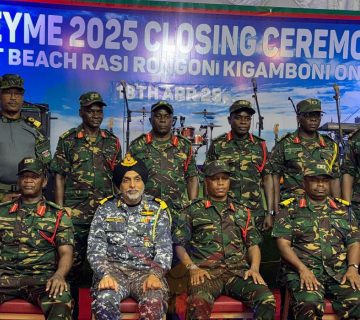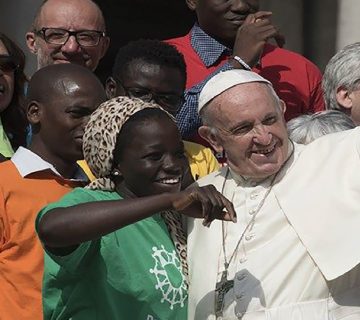In July 2011, South Sudan gained independence, and became the world’s youngest country. Just two and a half years after this momentous event, the country was gripped by civil war, and political strife. Six of the eight years of the country’s independence have been mired in unbridled political, and economic conflict’s that have led to continuous instability and fragility. There have been efforts by states and international organizations (at regional and global levels), faith-based organizations, and other international actors to put an end to the flames of war that have engulfed the country since September 2013. In September 2018, a peace agreement between the main parties to the conflict, President Salva Kiir, and rebel leader, Riek Machar, brokered by the now ousted Sudanese President, Omar al-Bashir, and Uganda’s President, Yoweri Museveni, created cessation of hostility between warring parties. However, the risk of South Sudan relapsing into war remains real if third party mediation by international actors, and continuous dialogue between the government and rival groups, which are the requisites for a proposed unity government to work, are not sustained.
A Poor Start
Even before the dust of independence celebrations settled, the civil war erupted, barely three years after gaining independence. Important institutions were still at their infancy and response mechanisms to reduce the effect of the war were weak. The country glided back into conflict, when President Salva Kiir accused former Vice-President, Riek Machar, of plotting a coup. According to a 2013 United Nations Office for the Coordination of Humanitarian Relief (UNOCHA) report, a few weeks into the fighting in 2013, an estimated 60,000 South Sudanese were seeking shelter at United Nation (UN) bases around the country. Drastic actions were taken by the UN Security Council (UNSC), including, the adoption of resolution 2132, which increased United Nations Mission in South Sudan (UNMISS) troops in South Sudan to about 12,500 soldiers and, transferred more UN troops from other African countries experiencing conflict to South Sudan.
The drastic response from relevant international actors and UN Security Council (UNSC) including adoption of UN Resolution 2132, which increased United Nations Mission in South Sudan (UNMISS) troops in South Sudan to about 12,500 soldiers, can be explained by humanitarian emergency that was created by the outbreak of civil war in the country. For instance, 50,000 people were killed in the first three months of the conflict. This was higher than the figure of people killed in Syria (which was also experiencing a civil war) at that time. Between 2017 and 2018, roughly five years into the war, the number of displaced persons increased to about 2.3 million people. About 230,000 people were seeking shelter in UN peacekeeping bases alone. According to the United Nations High Commission for Refugees (UNHCR, 2018), one out of three people in South Sudan is a refugee, 1.7 million people are internally displaced (IDPs), and more than 2.1 million have fled the country. The number of displaced South Sudanese rose from two million to about 3.8 million people.
FAILING PEACE AGREEMENT
Several peace efforts have failed in South Sudan. The first effort in signing a peace deal to end the conflict in South Sudan was in 2014. This was led by Inter-Governmental Authority on Development (IGAD). The process received monitoring and mediation support from Norway, United States (US), and the United Kingdom (UK). This initial process failed, as both parties were not able to finalize agreements before the requested deadline. The failure of the initial peace process resulted in several sanctions from UNSC and the US. As the conflict continued, fighting spread across all regions of the country, and the numbers of causalities increased. Pressures from regional and international actors demanding an end to the war and killings led to the August 2015 agreement on the Agreement for Resolution of Conflict in South Sudan (ARCSS) and the Revitalize Agreement for Resolution of Conflict in South Sudan (R-ARCSS), and the temporary cease fire agreement was signed.
However, the cessation of hostilities among both parties did not last long as both sides accused each other of violating the terms of the peace agreement. The parties also failed to meet the deadline to form Transnational Government of National Unity (TGoNU). As a result, episodic violence increased, thus making the situation in South Sudan one of the worst in the world, with the highest number of displaced people in the world.
This failure has been linked to several narratives – external and internal. The R-ARCSS is meant to end the ongoing conflict in South Sudan. Many South Sudanese, at home and in the diaspora, look forward to a day when their country will experience sustained peace. Such people have placed their hopes on the successful implementation of the shaky 2018 peace agreement, as is the only option that provides a means for international and regional actors to mediate in the conflict, and usher in peace into South Sudan.
Continuous Dialogue
The civil war has persisted since the peace agreement of 2015, mediated by IGAD, collapsed. There have been several regional and international diplomatic efforts to bring the leaders to negotiate in vain. In May 2018, a major peace talk took place in Addis Ababa, and efforts were made to bring both parties to the negotiating table. However, this only lasted for a month as all efforts to sign a peace agreement failed. Both parties could not reach any formal agreement on the IGAD proposal on sharing government positions, and most importantly, security regimens.
On June 25, 2018, one month after the failed IGAD-proposed peace deal in Addis Ababa, President Salva Kiir and Riek Machar met in Khartoum for the first time in two years. The meeting, which was brokered by former Sudan president, Omar al-Bashir, and President Museveni, was concluded with a new peace agreement signed in September 2018 which has so far succeeded in creating semblance of peace. The new peace agreement is the 12th time President Kiir and rival Riek Machar have entered into peace agreement to end the conflict.
The 2018 peace agreement calls for a ceasefire, and a unity government, but it does not adequately deal with the reasons for the collapse of previous agreements. With four months remaining for formation of a unity government (as part of the new deal) and, with little progress made so far in regards to the ceasefire, there are worries about the lack of proper mediation, and how the proposed unity government will define, and share power among the five Vice-Presidents. Additionally, Bashir, who was the convener of the agreement was ousted in a military coup in April 2019 after several months of protests in Khartoum. This leaves the 2018 peace agreement in South Sudan without proper mediation.
Third Party Mediation
R-ARCSS states that there will be institutional reforms in judiciary, military and parliamentary sectors, reintegration of security forces, rehabilitation and reintegration of returnees and IDPs. The most important is the 36 months “revitalize transitional government of national unity.” It also states that, “If there is disagreement between the two parties, the guarantors of the agreement, Sudan, and Uganda, will be the mediators.” There is anxiety given the lack of a dedicated third party mediation, especially after the overthrow of Bashir who was the convener of the agreement. There are fears that this could create a vacuum in the mediation process, and leave room for things to ‘go south’ in a country where distrust between the warring parties still runs deep.
After five years of fighting, and a 12th peace agreement on the table, the global community seems to have lost the political will to end one of the worst conflicts in Africa. US President Donald Trump described South Sudan as “a failed deal” in 2018, its leaders (who were freedom fighters), as “brutal oppressors”, and South Sudan as “becoming another failed state”. For long, political analysts have argued that one of the reasons previous peace agreements have failed in South Sudan is lack of “political will” from the political leadership in resolving the conflict. However, regional, continental, and international state actors also need to sustain their engagement in the peace process for it to be successful. For South Sudan to have inclusive and sustained peace, there is a need for a sustained and reliable third party, shuttle diplomacy, and mediation among the regional heads of states and conflicting parties.
Tonye Marclint Ebiede, Research Department, the HORN Institute.
Photo: A young girl hangs the South Sudan flag on a pole (Photo Credit: Timothy McKulka/USAID)



